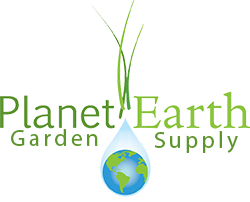- Home
- Gardens and Farms
- About Soiless Gardens
About Soiless Gardens
Soiless medium grow systems are used for indoor and outdoor gardens. Aeroponics, aquaponics, fogponics, hydroponics systems allows plants to be grown in a nutrient rick solutionwith water as the medium. Natural and/or artifical lighting is typically used in the indoor gardens. Now a garage, bedroom, basement, storage shed, grow tent can be used for your new indoor garden. Commonly, the grow tents packages enable the user to break down the garden in a timely manner. Growing hydroponically is economical and has enabled the gardener to grow with ease
Hydroponics is the use of a soiless medium. Growing hydroponically has been around for centuries since the hanging gardens of Babylon and the floating gardens of the Aztecs. Introduced commercially in the United States nearly 40 years ago, hydroponic growing has been tested extensively by NASA for use in space, and within the last 15 years, this technology has been adapted for home use.
Systems Large and Small
Home hydroponic systems currently on the market range in size from small windowsill planters to large complete room-size setups. Efficient use of water and nutrients in hydroponics allow greater numbers of plants to be grown in a smaller area. This advantage gives you the option to garden in the space available, whether it be a 2-foot space or a 9 by 9-foot area. Some systems, like the Hydrofarm Quantum system are large enough to accommodate 144 small plants, such as lettuce, in a 4 by 8-foot area. Your hydroponic garden size really depends on the amount of space you can set aside and the number of plants you want to grow.
There are several different options available for automatic watering and hydroponic growing media. Choose from a drip watering system, a nutrient film technique, an ebb and flow, or wick system, all using rockwool or geolite growing media. Rockwool, first used by European growers for vegetable and cut flower productions, is a superheated volcanic rock spun into fiber, much like cotton candy. The fibers are formed into cubes, slabs, or used in loose bales. Geolite growing medium is a kiln-fired, ceramic shell aggregate. Both these media are lightweight, sterile, and have a balanced amount of air space and high moisture holding capacity.
Sunshine Year-Round
There are many advantages to growing hydroponically. Automatic delivery of water and nutrients to the plant roots results in less root growth and increased top growth. Larger plants are produced in a limited growing area because the plant does not have to search for what it needs. A timer automatically controls the watering cycles; and nutrient, water levels, and pH of the reservoir are checked periodically to ensure proper growth. Most systems are very efficient requiring little more than 30 gallons of water per month. "Sunshine" for your indoor greenhouse is supplied by high-intensity discharge lights. The higher light intensity, depth penetration and light duration supplied by this type of light enables the gardener to grow a wider range of plants. One apartment dweller in foggy San Francisco grows jasmine in her entrance way by using a 400-watt metal halide lamp. Her entire home smells sweetly of jasmine almost year round. No need for room deodorizers here! Citrus, vegetables, orchids, roses, and many houseplants can be grown with success. Fluorescent lighting was once the most readily available and efficient method of supplemental plant lighting, but times have changed. A single 250-watt metal halide light system yields over 20,000 lumens of light intensity. It would take 10 full-spectrum 40-watt fluorescent tubes to equal the illumination of the metal halide. Multiply the facts and notice the fluorescents are consuming 400 watts of power versus the 250 watts used by the metal halide system to achieve the same amount of light. This is almost double the electrical cost.
The Right Light
When purchasing lights, consider the amount of area to cover, color spectrum of light needed, intensity of light for the plants, and features of the light system itself. Lower wattage lights, such as the 175-watt metal halide, is sufficient for a 3 by 3-feet area in a small kitchen garden. A 1,000 watt light works efficiently with larger systems covering an 8 by 8-feet area, and light movers expand the indoor greenhouse area with phenomenal results.
The color spectrum of high-intensity lights refers to the wavelength of light omitted from the bulb. Halide bulbs yield wavelengths balanced across the entire range of the spectrum necessary for optimum plant growth. This light is suitable for year-round vegetative growth. Halide lights emit more color spectrum but less light intensity, whereas sodium lights emit a more narrow band of the color spectrum but more light intensity. Sodium bulbs give off more light in the red end of the spectrum, enhancing flowering.
When choosing a light, always consider the light's "footprint" and the quality of the materials used to manufacture the light. Also, the complete system should be UL listed. Underwriters Laboratory is an independent lab that tests lights and appliances to ensure they are safe for use. Make absolutely sure your lights have been cleared for use in situations of high moisture such as a grow room or greenhouse. Contact a lighting expert or the manufacturer if you have questions regarding your system requirements.
Seasons may change outside your window but inside the weather is just fine. That bright spot tucked away in your home is an indoor greenhouse that will harvest many hours of gardening pleasure. Fresh fruit, cooking herbs, vegetables, and flowers are yours for the picking year-round. The deer, rabbits, weeds, and insects have all been left outside to fend for themselves. There is a time for every season... and the time yours.
 Loading... Please wait...
Loading... Please wait...


